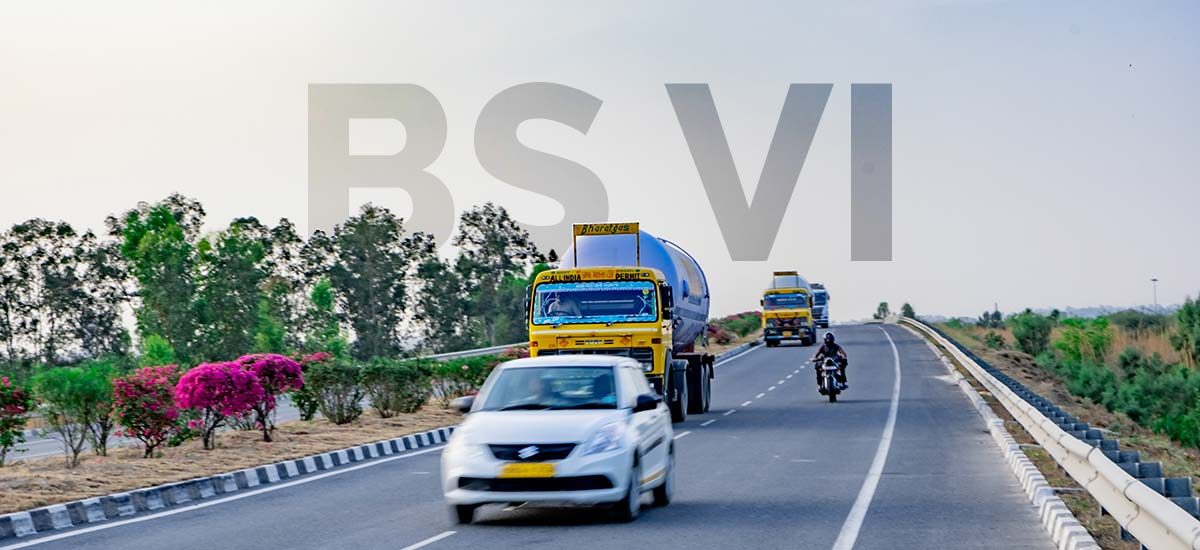"BS VI is an opportunity to imagine a new range of technology, components and systems for the vehicles of the future."
The story of India’s vehicle regulations
The vehicle regulations in India have been on the footsteps of those specified in the EU. Until two years back, upgraded standards in India lagged the equivalent EU standards by about 5-7 years in cities, and 10 years for nationwide implementation. The standards for two- and three-wheeled vehicles have stayed independent and developed in India.
October 2016 changed it all!
India signed the Paris Climate Agreement, which warranted the need for stricter norms to reduce the carbon footprint by 33-55% from the 2005 levels. While several experts in India feel the BS VI norms should have been rolled out after BS V, the leapfrog to BS VI was inevitable given the severe air quality problems in Indian cities due to the rising vehicle population.
Yet another first for India
The BS VI norms proposed by Ministry of Road Transport and Highways (MoRTH) is the first for any country, globally, to leapfrog from Euro IV to Euro VI equivalent level. While this sets an example for the developing countries, it also poses an uphill task for the Indian Automotive OEM and Tier I Suppliers.
Twin Engineers serves 7 of the top 10 Indian Automakers and over 35+ global Tier I and Tier II suppliers in India. This gives us insights into the challenges and implications of shifting to Bharat VI.
1-minute snapshot of BS VI norms
The draft BS VI regulation specifies new standards for mass emission, type approval requirements, On-Board Diagnostics (OBD) specifications, and durability levels for all vehicle categories in India.
Know the big impact areas

Overall, the BS VI norms mandate the NOx emission to be reduced approximately 25% for the petrol engine and 68% for the diesel engines. The PM emission is also mandated to be decreased by 80% in diesel engines which impacts practically everything in the supply chain making the right grade of fuel available right up to the fuel injection in the engine.
A shift from BS IV to BS VI – understanding the Technology Challenges for OEMs
While the Indian OEMs are prepared for the shift to BS VI in many ways, the challenges will come in many layers.
Where are the Indian OEMs ready?
Well, the Indian OEMs have been exporting to markets with Euro VI norms for many years. Where they are perhaps not so ready is to replicate the norms across India specific platforms and models. It’s a huge task, the magnitude of which is still not entirely clear.
New components demand new design
Take for instance, the DPF, which will now be mandatory for all diesel cars, is substantially bigger than the current set of filters. The vehicle regulations in India also have a different tariff point for vehicles based on its length, which means, for the small cars DPF will have to be accommodated without increasing the vehicle length beyond 4 meters.
At Twin Engineers, we also work with the top automotive filter manufacturers in India to automate the mixing and dispensing process. The Tier I and Aftermarket filter suppliers will also have to revamp their designs and production lines as the demand for BS VI vehicles starts to spike with the festive season.
Smart Electronics need stronger partnerships
This is true for ECUs, which are likely to see a massive update in terms of software and hardware. Our extensive work with some of the largest ECU manufacturers clearly shows a new wave of R&D in the otherwise settled space. A fast-growing ECU manufacturer that we work with has been doubling the production volumes for their product with smart and innovative controls. The OEMs are relying on their suppliers to help them meet the update and the production volumes before April 2020.
Additionally, several other electronics will also need tweaking which will include adding new sensors, and making the electronics smarter.
New fluids for meeting emission norms
The stricter emission control norms mandate changes in fuel and related fluids used in automotive. Twin Engineers has already supplied the Urea Filling Stations as mandated by the BS VI norms for India’s top HCV manufacturers. The HCV and Earth Moving machine manufacturers are investing heavily in the R&D and calibration of their vehicle platforms to meet the BS VI emission norms.
Implications for fluid filling, mixing and dispensing systems
As OEMs spend several crores calibrating and developing each of the BS VI platforms, requirements for new ways of working are constantly emerging. Ashok Layland, for instance, has marked a spend of over INR 200 Crs. on upgrading their products and manufacturing line for BS VI compliance. So, what does the platform upgrade mean for BS VI in general and filling, mixing and dispensing technologies in specific.
Based on our work and experience we see three trends for the equipment supplied in view of BS VI upgrade by OEMs and Tier I suppliers.
- QC integrations – components and BS VI norms mandate stringent quality compliance, which means combining the testing and measurement processes with production to meet the cycle time. We have seen a spike in demand for visual inspection systems in vacuum chambers, part presence sensors etc. in recent times.
- Equipment for Miniaturization and multi-functional components – While miniaturization was always a trend, its now often coupled with multi-functional ability. ECU, for instance, controls more functions than it used to in the past and has got smaller in size. From a mixing and dispensing point of view, we have greater automation and more applications in micro-dispensing (dispensing of less than 1 gm of material) or sealing in relays etc.
- Flexibility to handle more variants – As the differences between components manufactured for export and domestic vehicles converge, automotive component manufacturers are looking at new economics. The OEMs and Tier I suppliers are in need of equipment that is flexible to accommodate greater variety of components on a single line. We have already supplied production line automation for vacuum potting of 6 variants of ECUs on a single, fully automated machine.
Conclusion
BS VI poses some worthy challenges which were long due to driving the performance of India’s automotive industry to the global benchmarks.
Finally, now when the leap is imminent, the readiness for the same should be not just for immediate compliance but go beyond and leverage for the long-term benefits.
The opportunity is to imagine a new range of technology, components and systems for the vehicles of the future. And as its unfolding, do not hesitate to count Twin Engineers as the go-to-partner for all the challenges in mixing and dispensing.

